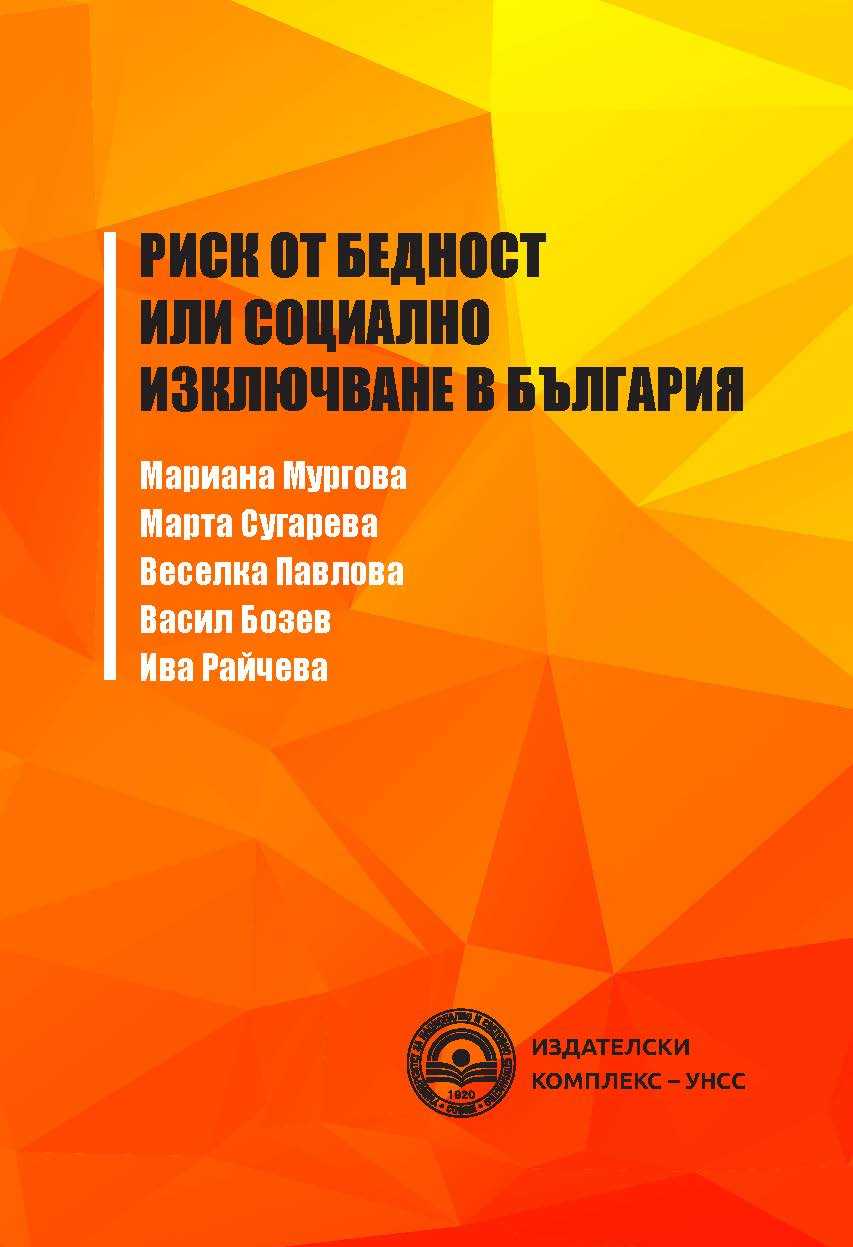Риск от бедност или социално изключване в България
Risk of Poverty or Social Exclusion in Bulgaria
Author(s): Mariana Mourgova, Marta Sugareva, Veselka Pavlova, Vasil Bozev, Iva Raycheva
Subject(s): Politics / Political Sciences, Politics, Social Sciences, Economy, Civil Society, Sociology, Developing nations, Evaluation research, Social development, Economic development, EU-Approach / EU-Accession / EU-Development, Socio-Economic Research
Published by: Университет за национално и световно стопанство (УНСС)
Keywords: poverty; material deprivation; social exclusion; risk of poverty or social exclusion; poverty among children; working age poverty; old age poverty; Bulgaria; European Union
Summary/Abstract: The reduction in the number of poor in the European Union (EU) is one of the key tasks in the Europe 2020 Strategy of the European Commission. Another priority objective is to reduce the size of the population at risk of social exclusion. Bulgaria is the EU Member State where the risk of poverty or social exclusion is one of the highest. This unfavorable position requires studying the causes and inferring policies to reduce the number of the population at risk of poverty or social exclusion. The aim of the study is to analyze the causes of high poverty among three of the most vulnerable groups in Bulgaria: children, working poor and elderly people over 65 years of age. The period from 2010 to 2021 is considered according to the available statistical data. The study includes six chapters. The first chapter examines the main measures of poverty and social exclusion used by various international institutions. Some key documents and strategies at international and national level related to poverty and the possibilities for its eradication are presented. The nature and manner of measuring the main measures of poverty and social exclusion, including those used by Eurostat, is clarified. The second chapter presents a review of the literature on the problems of poverty, social exclusion and social inequalities in Bulgaria. In the third chapter a critical analysis of the poverty measures used by Eurostat and other institutions is made, pointing out their shortcomings and consequences in their interpretation. An international comparison of countries is made according to poverty rates as measured by the indicators material deprivation and extreme material deprivation. The next three chapters present an analysis of the risk of poverty and social exclusion among the three most vulnerable groups of the population – children, working poor and people aged 65 and over.
- Print-ISBN-13: 978-619-232-773-6
- Page Count: 208
- Publication Year: 2023
- Language: Bulgarian
- eBook-PDF
- Table of Content
- Introduction

